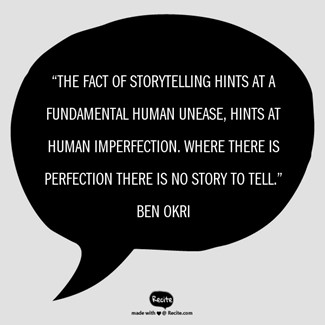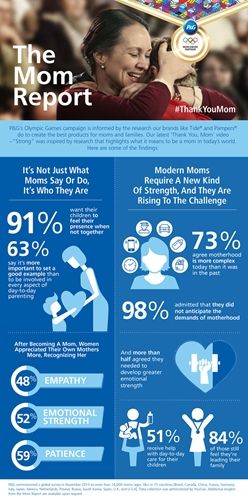"Storytelling" is often used loosely as a term for good writing. Which makes me wonder: Do marketers actually understand storytelling in the context of content marketing?
Yes, it's a borderline cliché buzzword. And, like "content marketing," at times ambiguous.
But all that aside, here's why storytelling matters: Social media has ignited the need for good storytelling—the key word being "good." Simply put, content now spreads in nanoseconds, so there's more risk in marketing than ever before. Brand reputation is at stake. Thus the importance and relevance of good storytelling.
Historically, storytelling traveled by word of mouth; bad stories were lost in time, but good stories stood the test of time. Now, thanks to a plethora of social outlets (for good or ill), it all travels at the speed of social lightning.
Not to mention social sharing occurs whether or not a story is engaging, making share stats a questionable success metric. Now, bad stories aren't lost in time; they live forever as a black scar on your brand's reputation.
Take McDonald's Hamburglar campaign or Bloomingdale's creepy "Spike your best friend's egg nog when they're not looking." Oops and ouch.
So, what is "storytelling" as it pertains to content marketing?
It's not just good writing or engaging prose. It's not a one-off ad or campaign. Storytelling is planned, integrated, and purposeful. It's empathetic, original, consistent. And it doesn't sacrifice brand integrity. Storytelling employs both creativity and strategy.
Here are six essential traits of storytelling...
1. Good storytelling makes customers care
You've got 8.25 seconds to make them care. That's right, humans now have a shorter average attention span than a goldfish's. So, you need to answer the customer's "what's in it for me?" or "why should I care?" questions—like pronto.
Why you matter to them is the answer to those questions: Why your brand, service, or product matters to your target customers. To combat short attention spans and create super-persuasive and engaging content, you must know your differentiators.
Joel Pulizzi said it best: "You can be delivering content in every channel on the face of the earth to dozens of audiences, but if it's not relevant, not compelling, not differentiated, and not consistent, it will not work."
Which leads me to...
2. Good storytelling is original—or at least it has a creative spin
Let's say your product or service is similar to your competitor's offering (maybe not such a stretch). In that case, discovering your distinct differentiators (proprietary process, historic milestone, product feature/functionality, brand positioning, etc.) becomes increasingly important.
Many plot lines and stories throughout history are similar (think comparative mythology and hero stories). But what is the key element that differentiates hero stories? The hero! The hero is always distinctive.
Your distinct differentiators are the heroes in your story. They solve the customer's problems. So make them as unique, proprietary, and super-powered as possible.
3. Good storytelling sells

Don't forget that the purpose of content marketing is "ultimately to drive profitable action." We think of storytelling as gumballs and jujus, but in marketing it resonates if it strikes a nerve with the customer's pain.
Stories have conflict. Metaphorically, "conflict" is your customer's pain. They're also conflicted about how to best solve their problem.
Your storytelling should answer how you can uniquely alleviate your customer's pain.
4. Good storytelling is delicately crafted strategy
"Delicately," because storytelling, in the context of content marketing, is not overt. It's planned persuasion. It's integrated and embedded within your content marketing strategy. Constructing the big picture allows you to strategize about the desired outcome of your story and how supporting initiatives can perpetuate and feed the story.
Think about it like chapters within a story. Each chapter, or marketing initiative in this analogy, fuels the story and brings you a step closer to its resolution. What each initiative should not do is to deviate from the story. Don't let the stress of getting a project out the door eclipse the need for strategy.
We've all been there... You love the creative and want to use it somehow, someway. Only... It. Doesn't. Quite. Make. Sense. Don't be a Hamburglar waiting to happen. Remain consistent to your story and brand.
5. Good storytelling is empathetic
You must relate to your target customer in order to create compelling content, and by "relate" I mean feel their pain.
Empathy enables you to create content that motivates customers to take action. But, if you don't know your customer, you can't create a compelling story. That's why knowing your customer demographics and psychographics is absolutely critical, but only a start.
Next, conduct thorough research. (Take a look at the P&G research examples at the end of this article, including The Mom Report and Always #LikeaGirl emoji research.) Moreover, in-house marketing departments, your product knowledge should be on par with that of Product Development's.
Test the product/service, conduct transactions, take it for a spin—whatever it is—and get to know competitors, features and functions, market forces, etc. Then you can create content and creative that's personal, relatable, original—and effective.
6. Good storytelling in content marketing doesn't happen in a day
It's a process intrinsic to content marketing. It ebbs and flows with your brand, product, or service—unfolding over time while creating connections and establishing loyalty.
Too often I encounter companies that know what they are, but not who they are. What you do or provide is obvious. What's hard is the introspection it takes to define who you are as a company.
Call it "the Force," "the Chi," or whatever, but our brand is what we're made of, not what we make.
That is the path to good storytelling.
Check out these recent storytelling campaign favorites
P&G "Thank You Mom" Campaign: "It takes someone strong to make someone strong." Brilliant.
For a glimpse at the research behind Procter and Gamble's campaign strategy, view "The Mom Report."
Always #LikeaGirl—Girl Emojis: In Always's continuing campaign to empower girls and blast stereotypes, young females point out blatant stereotypes in the standard Unicode emoji set.
Apple iPhone 6 "Hey Siri" starring Cookie Monster: These Apple iPhone 6 Cookie Monster and Siri commercials appeal to young and old alike while telling the hilarious story of Cookie's impatience and Siri's helpful hands-free features.
For more great storytelling, check out the AdAge list of Top Ad Campaigns of the 21st Century, including the Metro Trains "Dumb Ways to Die" campaign—which claims a 21% reduction in accidents and deaths on its network as a result of the campaign. Also, the Old Spice campaign strategy video and Dove's "Campaign for Real Beauty."






